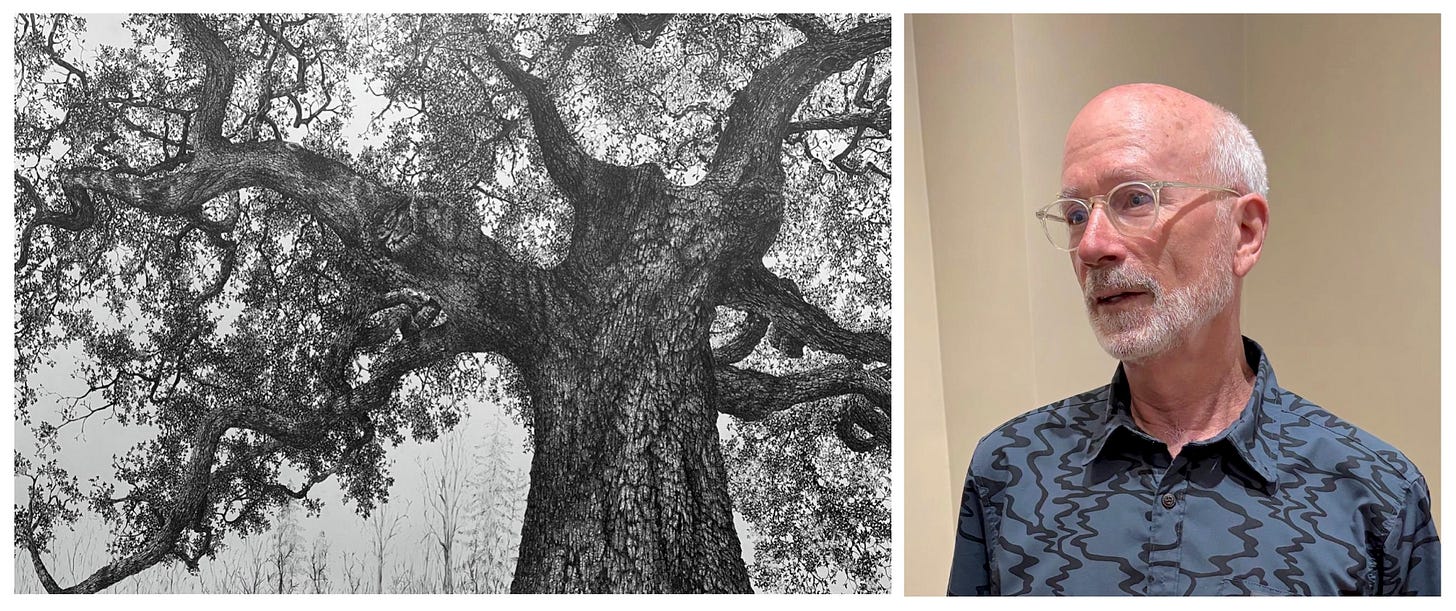THE ELEMENTS: Part Two
#126: A Conversation with Dan Keegan
Dan Keegan—The vastness of time and space is something that just absolutely mesmerizes me. Our solar system is in the Milky Way, which rotates at 250,000 miles an hour and is so vast that it takes 230 million years to complete one rotation. The entire Milky Way is estimated to be traveling through the universe at 450,000 miles per hour. It's just phenomenal. And yet here we are. Our planet is so special. The last piece I want to make sure gets in here is that I didn't know what I was going to do with these drawings initially. I was just making them, but I knew they were about climate change, and all these ideas we're talking about. I didn't know what I was going to do with them until I read the book by Hannah Ritchie Not the End of the World. She is a Scottish research scientist living in London. She pulled together fascinating data points about what has really transpired since the onset of the Industrial Revolution, and how all of this progress is both putting Earth in peril yet also gives us the power to save it. I realized that the data piece of this could be the backboard, the foundation for why I made these drawings in the first place and how to exhibit them as the ancient concept of the elements of earth, air, fire and water.
James McElhinney— What kind of experience do you hope visitors to the show will have when they're looking at your work?
Dan Keegan— Maybe I'm being naive, but I hope it gives people a moment to pause and think about how we are interacting with nature on a personal level and what kind of change or difference we can make on a local level. You know, it's the old adage, all change is local. What can I as an individual do to contribute to the overall health and well-being of the planet? Maybe that seems like a grandiose, impossible task, but if you subscribe to all change being local, then each and every one of us can make the planet better. Whether that's planting a tree or taking a walk in the woods or reducing our carbon footprint. Maybe that's a starting point. But the other thing I hope people will do is dig into it and start to read something about it instead of listening to sound bites on MSNBC or Fox News.
James McElhinney— What do you hope visitors to your show might say to themselves? “Wow! I'm gonna go home and start drawing.”
Dan Keegan— Fantastic. I'd love it. And of course it begs the question, draw what? Well, if a visitor is inspired to pick up the pencil or the paintbrush and address issues of the environment for others to have the same kind of experience I just described, fantastic. So, there's always that—to inspire others to be creative and expressive in their own way and connect others to ideas they believe in.
James McElhinney— Your works are not preachy. They're poetic meditations on natural events. I think of your drawings as graphic paintings. So, how do you decide what you're going to draw?




